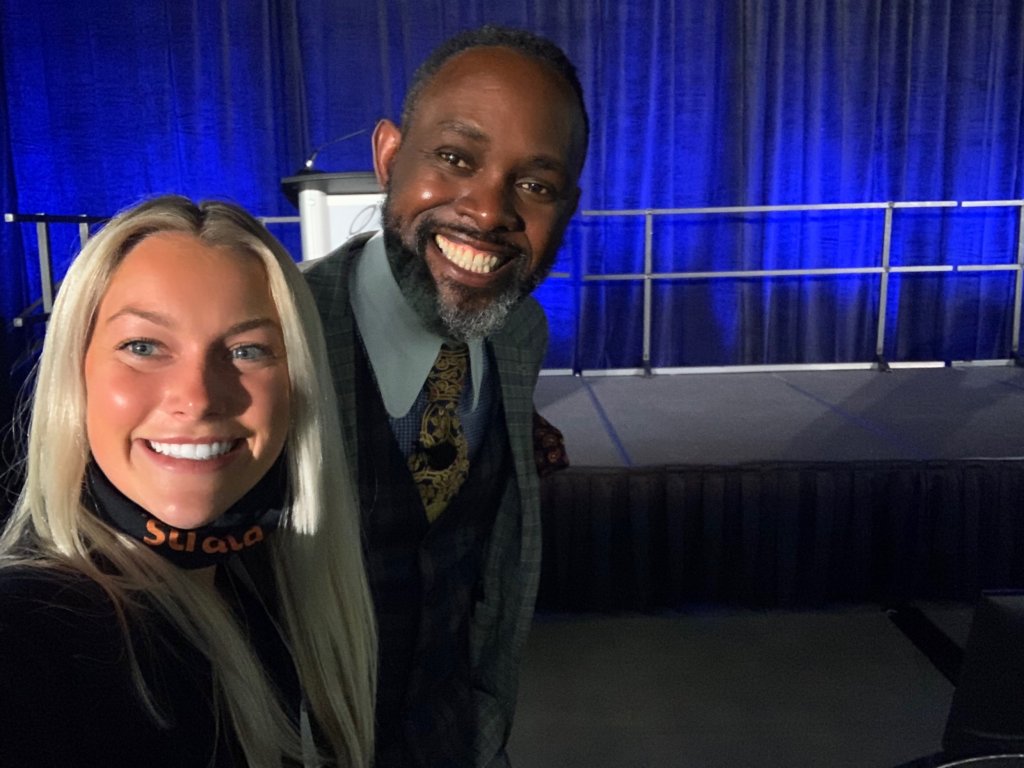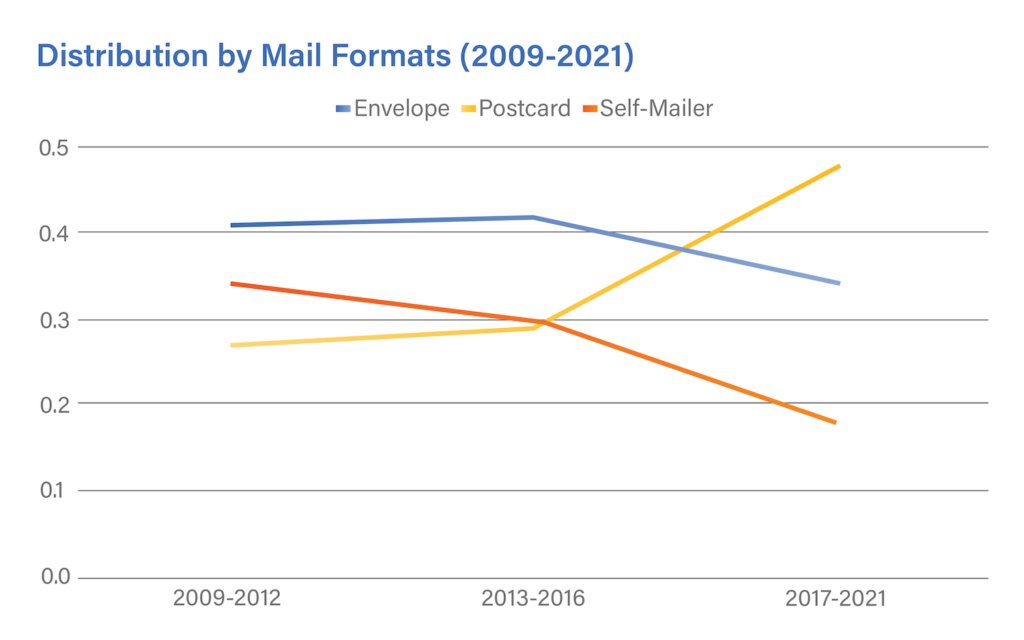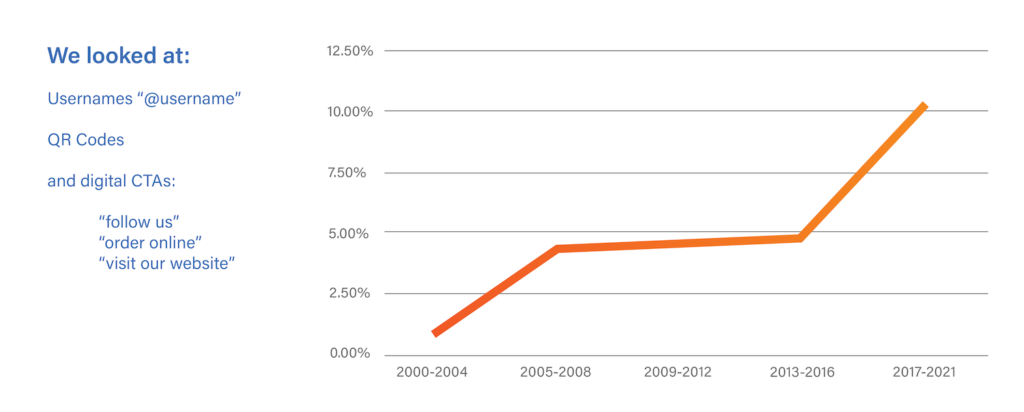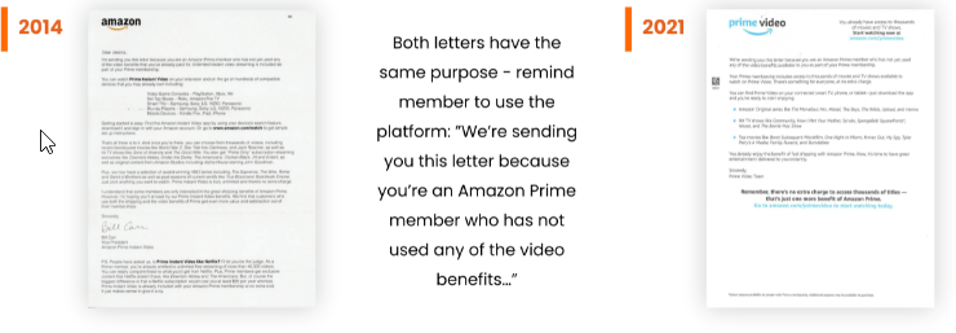A Strata YouTube Channel Original
Figuring out your multichannel campaign workflow can be difficult (at first). At its core, a workflow should be a living, breathing thing, and you most likely won’t come up with the optimal flow right from the get-go, and that’s alright, you’re not really supposed to. When building a workflow, your goal should be getting to a point where you’re tweaking it throughout the campaign, not reengineering it. That said, in our most recent YouTube video of our Multichannel Marketing series, we go over best practices for creating this flow, and the ways in which you can make it work well for you and your company.
Are All Workflows the Same?
The answer’s no. Look at the construction of your workflow as an iterative process. Something you sit down with, leave, come back to, leave for another cup of coffee, come back to and test out, make calculations for, leave, come back to, leave for more coffee, etc. Go in with the expectation of optimizing it a handful of times. Remember, it’s personalized to you and your company’s goals.
Its Importance
Having the most effective campaign from the get-go is one thing, but building a workflow and truly thinking through a theory for that workflow is another. It allows you to better test and evaluate your campaign’s goals. If you begin to see a disconnect between your campaign goals and what you currently have after constructing a workflow and calculating your multichannel KPIs, you have a problem. But, the good news is that you can work to solve it before spending money, and possibly disrupting your reputation. This is one of the main reasons workflows are important to have – so you can catch any kinks before launching your campaign.
First Steps
When starting to create your workflow, there are a lot of framework options you can build upon. The video that we’re referring to in this blog is for building a ‘base’ workflow, but, for information on how to tweak your ‘final’ workflow, check out this video when you find some time.
A commonly used workflow strategy formulation starts with defining the highest and lowest levels of the marketing funnel that you want to address. You can have as many ‘funnel buckets’ as you want, and they’ll vary based on your industry and business model. Here are some basic ones that can be used:
- Awareness
- Consideration
- Evaluation
- Purchase
We recommend laying these out as lanes in a flowchart. It helps to visualize the different stages of engagement for your campaign members.
To see next steps for building your multichannel workflow, click on the video below. You’ll hear our Director of R&D, Harrison, go through best practices and tips and tricks for getting yours set up. Or, if you’d like to discuss this concept with one of our multichannel experts, contact us today.
A Strata YouTube Channel Original
Creating a personally relevant multichannel campaign can be difficult without proper preparation and guidance. Luckily, in this blog, featuring our most recent YouTube video of our Multichannel Marketing series, we go over some marketing personalization statistics, how to create a personalized, cohesive, and seamlessly relevant journey across multiple channels, and ways to better know who your buyers are.
The key to starting is to understand who your audience is and their specific buyer journey. Once you collect this data, it’s time to personalize and make sure the content you’re putting in front of them is relevant.
Map Out Your Customer Journey
When creating the perfect multichannel campaign for your audience, take a look at who your buyers really are and then work backwards to figure out how they became a customer. What high-value acquisition channels did these customers use? Which customers have strong LTV (lifetime value)? Talk to your customer service team and your customers. Once you organize and map that out, you’ll have a much easier time figuring out where the problems are, and where objections are coming from. And finally, discover where customers dropped off in the funnel. Put all of this together, and you’ll have a clear look at the journey your customers take and how you can improve your connections with them.
Establish Your Data
When we say establish your data, we’re talking way more than first names and company names. While those are important – that’s not the personalization customers are looking for these days. You’ll want to start partnering with a company (or using software) that can help you gather info like real-time, on-site behavior, online and offline conversion history, geographic location, product affinities, and device activity. All of this will help you develop a strategy that’s consistent and relevant from one channel to the next.
Ultimately, there’s no one-size-fits-all personalized experience – that’s why customers crave it so much. To see what steps are next in establishing your personalized approach, click on the video below. You’ll hear our Marketing and Social Media Coordinator, Bridget, go through best practices. Or, if you’d like to discuss this concept with one of our multichannel experts, contact us today to get your next (or maybe even your first) multichannel campaign started.
To Keep an Eye on
As a marketing solutions company with lots of interest in innovation and change – we’re big on knowing what’s trending and what’s to come. 2021 was filled with a ton of new trends, some – because of changing times and innovation – others, because of big events and worldly occurrences. To stay ahead and prepare for the new year, we’ve looked into the top marketing trends – within design, print, and digital, to keep an eye out for in 2022.
2022 Design Trends
Visual Inclusion
Recent movements around the nation, and even the world, have sparked a broader portrayal of diversity and inclusion in visuals. When crafting your marketing, think about how you can show diverse people in a variety of ways – in your photography, graphics, and iconography. And, even more, think about including imagery of people that your target audience(s) can relate to.“The default for people icons and images are no longer white, male, and able-bodied. There is more representation from marginalized groups in marketing visuals.” The more open, inclusive, and inviting your marketing is, the more likely you’ll bring in a diverse range of interested (and trusting) customers.
Bold Backgrounds
Bold and bright backgrounds and backgrounds with patterns are on the rise. These types of backgrounds attract attention and stand out from the pack, among otherwise modern – and primarily dull, gray, or white – busy feeds and mailboxes. Try using a brighter, bolder background to stand out among other marketing materials. This tactic can be “quite stunning when paired with more simple typography or other design elements,”but, to make this trend work for you and your brand, “ensure that everything has a place and there’s good eye flow between elements.”
Unique & Fun Typography
The year 2022 will be all about typography that “breaks standards”, such as “one single letter…upside down, bigger or smaller, in a different font, or completely missing.” Forecasters expect “lettering that pushes the bounds of easy legibility, creating forms that are expressive in and of themselves.” This unique and rising design tactic can also make for more internationally understandable text and imagery that can be read from culture to culture.
Authentic Imagery
Authentic, realistic imagery that your audience can connect with is always important – but will be increasingly popular in 2022. People don’t want to see fake stock families and disingenuous product photos. They want to see real. “Even commercial photography is shifting to look more like snapshots for these projects” instead of planned, posed imagery. This tactic may be a little less polished and intentional, but it works, because it’s relatable. “More authentic imagery is not amateurish; it’s just a different style.” Yet, this doesn’t mean taking blurry or “thrown together” photos. It means shooting high-quality photography that’s just a bit more casual and realistic to real, day-to-day life.
2022 Digital Marketing Trends
Conversational Marketing
This will be a big one for 2022, as it’s already been on the rise for quite a few years. Why? People want to connect with, and relate to, real people. And, they want fairly immediate responses from those real people. Customers feel more connected with and trusting of companies that tell their story, as well as the stories of their products. They want to hear and see real life examples of what the product has and does, and what sets it apart.
A recent study found that 41.3% of consumers use conversational marketing tools before making purchases. “Unlike traditional strategies, this form of marketing is now available across multiple channels, allowing brands to meet customers on their terms: on the devices, platforms and time schedules that suit the customer best.”
Read more about customer communication and relatability, here.
Video Marketing
This trend isn’t new, and is likely to continue in popularity for the next 5-10 years. It’s no surprise to us (and likely not a surprise to you) that 61% of marketers see video as a “very important or extremely important” part of their marketing strategy. It’s a useful tactic not only because of its visual appeal and high rate of easily digestible content, but because it can be republished on several platforms, and cut and manipulated for repurposing. A recent study recorded that “84% of consumers have been convinced to purchase a product after watching a video.”
To read more on video marketing, click here.
Interactive Content
This year, there will be a noticeable marketing shift from “traditional text-based content toward dynamic, engaging content” like quizzes, augmented reality, polls, 360-degree videos, and more. These tools give customers a more memorable connection with both the product and the company, and get them involved with the brand – not just get them to see it. In fact, 91% of customers are interested in seeing more content they can interact with.
First-Party and Zero-Party Data
We’ve talked a bit about this topic before in a fairly recent blog post, and this trend is sure to skyrocket into 2022. This year, “first-party cookies will force marketers to be mindful of the data they collect and how they use it,” primarily because companies can now only use their own collected data. This also means that companies will need to be much more authentic and transparent with their customers. Along with first-party data, zero-party data – data given to a brand or company directly from the consumer, will also be a key focus. Some examples of ways to acquire this data are through surveys, forms, or email.
2022 Print Marketing Trends
Combining Print & Digital
This particular trend – we’re very well-versed in. Combining print and digital can do wonders for your campaigns, meeting your customers with mulitple touches on and offline. A great example of this combination is using a personalized URL and QR code on a printed piece. QR codes on print marketing not only give customers an easy way to get to know your company better, but can be vehicles to get customers to purchase or sign up for a program – immediately. These types of combination tactics are flexible, dynamic, and cater to many differing age groups.
Creative Customer Personalization
Also, a great online or offline tool? Personalization. When your company caters to a specific type of audience, or even specific customers rather than a blanketed group, you’re more likely to meet customer’s needs and turn them into loyal ones. Additionally, personalization can be cost effective. Why’s this? In order to personalize, you can’t target everyone – just the right ones.
Direct Mail
Lastly, not a new or surprising trend to us, direct mail will continue to grow in popularity in 2022. “With the content marketing boom and remote working becoming the new normal, many consumers have become ‘numb’ to digital marketing campaigns.” So, if you haven’t, why not give direct mail marketing a go? Trying out this re-emerging marketing trend could bring a ton of new customers to your site, as 70% of people engage with a brand online after receiving their direct mail.
Read more on why direct mail is so impactful, here.
Interested in ramping up your marketing in 2022 using one or more of these solutions? We can help! Contact the experts at Strata, today.
The Good, the Bad, and the Ugly
You may or may not have heard about the recent postage update from USPS. If you haven’t, we’ll fill you in. The new maximum size for mailing First-Class mail postcards has increased from 4 ¼” x 6” to 6” x 9”. This means you can now send postcards as large as 6” x 9” at the postcard rate of $0.40. But – before you get excited, let’s dig a little deeper into this. As experts in the mailing industry, we’ll help you decide whether or not you should be taking advantage of this change, or if you should continue business as usual.
The USPS Update: The Facts
You may or may not have heard about the recent postage update from USPS. If you haven’t, we’ll fill you in. The new maximum size for mailing first-class postcards has increased from 4 ¼” x 6” to 6” x 9”. This means you can now send postcards as large as 6” x 9” at the first-class postcard rate of $0.40, 30% less than before the change! But – before you get excited, let’s dig a little deeper into this. As experts in the mailing industry, we’ll help you decide whether or not you should be taking advantage of this change, or if you should continue business as usual.
The $0.40 per postcard price is the price you pay for simply dropping a card in the mail (no sorting necessary). However, if your quantity of cards exceeds 500, you’ll save more if you sort your cards. Why? Because the post office gives you a discount for doing some of the work for them. For first-class presort, you’ll pay between $0.30 and $0.35 per postcard, depending on how your mail sorts. The higher the density, the lower the price.
You sort standard-class (bulk) mail the same way you sort first-class mail – and if you do, the cost for the same 6” x 9” postcard will run between $0.245 and $0.31. Again, the cost heavily depends on the density of your distribution. For instance, if you’re sending 500 postcards to one neighborhood, it will cost less than sending 500 postcards to several different areas around the country.
Sorting your mailings and sending them standard-class will save you an additional 15% over the comparable first-class rate, a substantial amount for any large mailing.
So, what does this all really mean for you, and what is the best choice for your mailing?
The Perks & Problems of First-Class Mailing
So, here’s the “perks” of first-class mailing. With first-class, you can send impactful postcard mailings at an affordable price – to anywhere. There’s no 500-piece minimum, and there’s a 30% discount on regular first-class mail. You’ll know exactly what your postage rate is going to be at – $0.40 each.
Quantities larger than 500 can be sorted and will likely get to your regional audience faster than they would with standard-class mail. You’ll pay roughly a 15% premium over the cost of standard mail to do so.
With that said, the post office has yet to fully recover from issues related to the pandemic. Although we’re hopeful this will change over time and that it will return to its prior state, the possibilities are always in flux. Without knowing when things will return to “normal”, it’s hard to depend on mailing delivery times. Throughout the pandemic, we’ve experienced delivery time issues with first-class mail. For this reason, we’re recommending a “wait and see” approach with the post office as it applies to estimating delivery dates.
Counter intuitively, for a company whose in-home date is important – the idea of first-class can be a bit of a trap, and even more so with pre-sorted first-class. The post office will often handle it in the same way as pre-sort standard-class. If in-home dates are important to your campaign and your mailing is large, then there are better ways to get more predictable in-home delivery and save money.
Our Alternative
Since we’ve found some pitfalls in this new update – we’d like to share a little about Strata’s tools and tactics. For large mailings, we’re able to use standard-class mail and predict the delivery date plus or minus one day, in most cases. How? After years of experience, we’ve come to use alternative methods and have taken out several variables. These methods are not allowed by the USPS for first-class mail – only for standard-class mail. Therefore, most of our customers are better off sticking to standard.
We don’t see us ever recommending this new program for large mailings. Standard mail will always cost at least 15% less, allows you to send many mail formats including even larger than 6” x 9” sized postcards for the same postage, and provides in-home date that will always be more predictable when using our methods.
Conclusion
If you’re a local company and want to send out mailings in your region or have quantities of less than 500 – this sizing and pricing update is something you may want to take advantage of.
If your in-home dates are somewhat less critical and you’re mailing regionally, then you may be able to get faster service at a somewhat higher postal rate and, again, may want to try this program.
If you have non-critical in-home dates and your mailings are at quantities of more than 500, standard-class is always going to be less expensive, and you won’t see much difference in delivery times.
For large mailings, first-class is less predictable and more expensive than optimized standard mail. Strata has standard down to a science for these bigger quantities. In all cases, standard service will still save you at least 15% and will provide you the option to send even larger cards and mail formats at the same rate.
Consider this guidance when you’re thinking about taking advantage of this update in USPS services and deciding if it’s right for you.
Interested in working with Strata to ensure your mailers get in-home when you expect them to? Give us a call.
How to Fight it & Flourish
As spooky season approaches and Halloween is around the corner, we’re thinking a lot about our biggest fears. But today we’re not talking about ghosts or goblins or even Michael Myers. We’re talking about one of the scariest things of all to any workplace…complacency.
“Complacency is man’s biggest weakness. It creeps up on us when we least expect it.” – Jay Mullings
Even if you think your company isn’t anywhere near complacency, there’s still always room to evaluate and grow. And, you may be surprised by what’s lurking behind the door of contentment. Complacency is not only bad for your company, but good for your competition, which we’d assume will give you a bit of a fright. If employees aren’t challenged to improve, things are the way they are because it’s the “way they’ve always been”, and the company isn’t growing, it’s definitely affecting your revenue. But don’t worry – it’s never too late to change. In this blog, we’ll take a look at the best ways to avoid company complacency and ensure you’re periodically updating and enhancing your culture, practices, and marketing.
Complacency’s Cause
Complacency can sneak up on any company without warning, shielding it from growth and stifling creativity and innovation. Why? Because if companies are seemingly doing “fine” and meeting their goals on paper, they feel no “need” or urgency to change. That’s where the biggest mistake is made, because companies should always be looking to evolve and thinking about their vision for the future. If not, ideas become stale, talent becomes bored, and eventually, the company comes to a jarring halt without any clue of how they got there.
When everything seems to be going well, it can be difficult to disrupt successes. And it may feel like the right decision to let processes and practices take their course rather than think about next steps and development, but often “the riskiest thing we can do is just maintain the status quo.” Without urgency and consistency for change, employee performance shifts and can even decline. Statistics show that only 30% of employees in America are actually engaged in their work, and only 13% of employees worldwide are engaged in their office environment. With such low numbers already, it’s so important to keep employees excited, energized, and motivated for what they’re doing and what’s to come.
Combatting Complacency
With complacency being a bigger, scarier possibility than you may have assumed, it’s important to keep it top of mind and to make sure you’re doing your best to combat it. Start with communication of your company’s mission, vision, and values. Make sure they’re clear, known, and maybe most importantly – accurate and true. Know who you are. If you do – your employees will too, and in turn they’ll feel more connected with and motivated by your workplace. Allow employees to see their contributions to the bigger mission, and their worth as an asset to the overarching vision.
After all, having a good (and growing) company culture is key to combatting complacency and ensuring workplace satisfaction. How do you improve your culture? Many ways, but the most effective tools are company newsletters, employee highlights, group meetings, and employee appreciation. Again – make your employees feel valued, and they’ll more likely provide value.
Additionally, make sure team members feel important and part of the greater whole. Encourage managers and team members to communicate within their individual teams, and make sure responsibilities are delegated and well distributed. Employees are more likely to become bored when they’re doing the same tasks over and over, so give them room to be creative and explore new opportunities. You never know who may have the next best idea.
Lastly, be prepared for whatever may come your company’s way, and never be too afraid to challenge the status quo. If we’ve learned anything these past two years, it’s that anything can happen, and that the saying “it won’t happen to us” is just not realistic. It’s important to listen to the ideas of your employees and always be prepared for what’s to come with an open communication structure. Make sure you have multiple decision makers, not just one, and that employees feel comfortable enough to make some decisions without “permission” from a leader. Training your employees to make decisions on their own will be a key factor in combatting complacency.
Refreshing Without Fear
Almost as important as your workplace and its people is your brand and marketing. Without change and evolution, your marketing can quickly become out-of-date right under your nose (causing your employees to lack company pride and your audience to lose interest). But how do you know when it’s the right time to update your brand and marketing?
A sure sign (these days) of lack luster marketing is an absence of social platforms. Some would even say if you’re not online, you might as well not exist. And although we think that sounds a little spooky, we’ll admit that it holds some truth. If you’re hard to find and not posting relevant content and imagery, target customers may be choosing your competitors (who are more accessible and approachable) over you.
Also important to your brand and its relevance is your website. In this day and age, it’s very easy to tell when a website has been left alone so long that it’s developing cob-webs. If you’re finding that your website traffic is down and your customers aren’t interacting with it, it’s time for an upgrade. But, before any big changes, compile data and make purposeful decisions. What is your audience looking for? What do they respond well too? How can you quickly and easily get them to have interest in your company and purchase goods?
Additionally, make sure you keep your advertising and customer communication – whether digital or physical – energized and creative. Combine direct and digital marketing to reach specific audiences and keep your brand top of mind. Don’t settle for just one medium that “seems to be working” if multiple channels of communication could bring you more success.
Lastly, avoid complacency by focusing on helping the customer rather than selling to them. While the overall goal of most companies is to generate sales, it’s essential you show your customers that you care about their pain points and needs. To see all of these tactics in action, check out our recent blog on how to create successful marketing campaigns.
Company complacency can sneak up on you like a ghost in the night and lead to missed opportunities, poor customer service, and disengaged employees. Stay aware of the possibility of contentment and make sure you’re always exploring, evolving, and rising above the rest. Change is inevitable, but complacency doesn’t have to be.
For more information on what we do at Strata and how we can help you fight complacency with one of our marketing solutions, contact us today.
With a Combination of Direct & Digital Marketing (and the Right Partner)
Maybe you’ve heard about the paper shortage, or maybe you’ve experienced it first-hand. Either way, it’s something you should know about, as it’s seemingly becoming a bigger issue in our field day by day. But, before we sound all doom and gloom, we do have good news. Although it’s a current issue we’re facing, there are ways to combat it and work around it. In this blog, we’ll walk you through what exactly is causing the shortage, what it means for us (and you), and how we all can continue business as (almost) usual.
What’s Happening with the Paper Shortage?
So, what’s really going on? Well, there are many shortages going on right now – primarily due to all of the craziness that’s ensued over the past few years. The pandemic has been the primary factor in most shortages, from toilet paper to manufacturing products, and everything in between. Something else that’s suffering? Lumber, and in turn – you guessed it – paper.
Back in 2020, the demand for paper dropped by “up to 75% in some segments” due to drops in education and office space usage. Because of this, “paper mills reduced or curtailed production…which caused inventory to drop to levels which have not been seen previously.”
More recently, there’s been a “convergence of Canadian lumber tariffs, increase in demand for home remodeling and building of homes brought on by the pandemic, and hiccups in supply related to transportation.” From home projects to home purchases, we’re now using a lot of wood. More wood demand has called for changes in processes for these previously idle lumber suppliers, which has slowed production – and even worse, transporters impacted by Covid-19 risks has made for fewer available drivers to carry out shipments from mills and shipping ports.
Generally, one thing has led to another, causing a domino effect that’s triggered lumber prices to skyrocket, and has disrupted several industries.
What Does This Mean for Marketers & Print Projects
Yes, the paper shortage is concerning, but it doesn’t make print and direct mail marketing impossible or any less effective. With that said, don’t go overboard. Be aware of the materials you’re using and try to keep a close eye on the balance of supply and demand. While the lack of resources is a hurdle, the shortages are actually giving printers and marketers an opportunity to get creative with project execution by combining print with digital and trying new outreach possibilities.
How Can We Combat the Shortage?
There are several ways to work around the current hurdles we’re facing. The first? Using more digital technology wherever possible (and effective) – like QR codes, for example – to cut back on the paper needed to communicate a message or tell a story. Not only can QR codes and PURLs, or other tools help you use less paper, but they can help you more effectively track, monitor, and enhance your campaign. You can also try supplementing your multiple direct mail touches with other tools like digital ads and emails. A multichannel approach is always more impactful than a single channel, anyway.
Next, look into making your mailers, flyers, and other print marketing materials more cost effective by using a smaller paper weight, or stand out in the mail with a smaller but more uniquely shaped piece.
Lastly, look to work with a company with paper buying power and ample experience. They’ll be aware of the current issues, and will understand what’s best for your company’s marketing needs.
Reach Out
When it comes to shortages of any kind, remember to be patient and plan ahead. The paper shortage most likely won’t be around forever, but the more flexible you can be, the more you can mitigate the issue. After reading this, we hope you’re feeling a bit more knowledgeable of the current shortage as well as what you can do to combat it. If you’re interested in learning more about how Strata’s working through the shortage with our client (and on our personal projects), or are looking to work with us on your next multichannel marketing campaign, feel free to reach out.
From QR Codes to Concise Copy
Direct mail trends can be difficult to forecast, and even harder to use correctly and efficiently. However, you’re in luck, because as direct mail experts, we’re providing you with the top 10 direct mail trends – from QR Codes to concise copy – that have and continue to dominate 2021.
1. QR Codes
In the last few years, QR codes have really built a name for themselves. Not only because of their quick, digital nature, and the 2% postage cost break that comes with them, but because of their data-backed effectiveness. When a QR code is included in a way that makes sense- it provides a time-saving benefit to the customer while letting the company lead their customer exactly where they’d like them to go.
Although the year 2020 was detrimental for most industries and marketing tools, the QR code flourished. During a time where we didn’t want to physically touch anything, QR codes made up for physical marketing pieces like menus, signage, print ads, and flyers, leading customers from physical to digital – and quickly. The more QRs were seen, the more used to them we became (similar to our newfound familiarity with masks and hand sanitizer). And they’re still going strong in 2021.
Like we said, QRs lead customers to wherever a company would like them to go. They can provide helpful information, send the customer to a website, or even lead them to purchase.
2. Postcards on the Rise
Envelopes – they’re great and all, but let’s be honest, they add a few seconds (at least) to the time it takes to open (and read) direct mail. These days, it’s often better to send a postcard due to its more creative, eye-catching nature and faster access to information. Making it easier to read your call-to-action can often make customers more likely to respond to an offer or even visit a website or landing page for more information. Plus, they’re lower in cost – which means a better chance of higher ROI for your campaigns. As you can see below, postcards pushed past self-mailers and envelopes this year by quite a bit.
3. B2B Dimensional Mailers
These fun, three-dimensional, interactive mailers are the perfect way to stand out and cut through the clutter of everyday mail. “On the B2B side, dimensional mail is working well; because we all receive so many packages today, prospects want to open it and see what’s inside,” says Grant Johnson, Owner and CEO of Responsory. Although more costly and demanding in terms of postal handling, dimensional mail has the best B2B response rate at 8.51%. Check out our blog on the best secrets to a successful dimensional mailer campaign to get started on your own.
4. Better Segmentation with Data
“Accessing 1st and 3rd party data to further segment an audience will continue to play a huge role in a DM campaign’s success. If you’re able to align targeted messaging and great creative with those different segments, then that’s a recipe for increased response rates. Furthermore, surrounding that DM send with a similar message/offer through various digital channels will only add to that campaign’s success. Being able to hone in on delivery dates and putting an emphasis on speed to market are big contributors to making a direct mail/digital integration program thrive.”
– Mike Efstathios, Business Development at ICS Corporation
Data, data, data. It’s all everyone can talk about these days – and for good reason. Enriching your data qualifies your audience, and in turn, increases your ROI. And, if your marketing strategy is multi- or omnichannel, the customer experience becomes even more successful. While better segmenting your data may cause your audience to shrink, it will definitely cause your engagement to grow. Like we always say – it’s better to target the right people than all the people.
5. Increased Personalization
88% of marketers recently reported seeing better campaign metrics after using personalization in their advertising. More than ever before, the need for marketers to make human connections is extremely relevant, and some may even say necessary. The majority of our population feels they’ve lost personal connections and relationships due to the pandemic. Because of this, 2020-2021 has been the time to make up for lost connections by personalizing materials to bond with your audience and make them feel seen, heard, and human. Check out our blog on the best ways to get personal, here.
6. Higher Response Rates
Since the beginning of 2021, we’ve seen a rise in direct mail response rates. Why? More time at home means more time to go through – and even pay attention to, mail. And as the trend of working from home and staying at home has continued and even increased, response rates don’t seem to be dwindling anytime soon.
However, high response rates don’t just come from people staying put. They come from quality tracking, targeting, design, and audience awareness. For more tactics to increase response rates, visit this blog.
7. Interactive Direct Mail
In today’s world, we’re surrounded by technology. And with all of this technology, there’s no reason we shouldn’t be incorporating it into our direct mail efforts. 2021 brought new technology and an abundance of data that empowers companies when targeting audiences and crafting content. Next time you’re sending direct mail – think about how far you can go with it. Can it include a scratch-off? A game? A free kit or item? A contest? It’s pretty limitless.
8. Digital Prompts
Direct mail isn’t only a way to reach customers, but an excellent way to reinforce online efforts. Simply use social icons, QR codes, or other prompts to send customers to social platforms, websites, menus, forms, landing pages – you name it! Marketers are definitely catching on to this direct mail tactic, as usage of digital prompts has doubled in the last four years. Take a look at the chart below to see how the use of digital interactions has increased.
9. Concise Copy
It’s one thing to know what you want to say, but knowing how to say it is the real key to direct mail effectiveness. Throughout 2021, we’re seeing shorter sentences, smaller paragraphs, fewer bullet points, and obvious CTAs. Your audience’s attention span is only so long, so catching the ears and eyes right away is crucial.
Below is a great example of how Amazon has practiced this and changed their copy to be more concise and clearer. Even at just a quick glance, the message is less overwhelming and more approachable.
Need some help with your direct mail copy? We’ve got a blog for you on ways to write action-inspiring content.
10. Investing in Direct Mail Tools
Although it’s not always top of mind, the right tools are one of the most important components of great direct mail. If you haven’t looked into or invested in marketing and data tools, you should be, because they can take your direct mail from general and stale to effective and exciting, and in turn, save you time and money. Instead of targeting the wrong contacts or using the wrong design elements, the right tools will ensure your mailer looks great and is sent to people who will actually open and engage with it.
Consider changing your format, ink, paper, or finish. Update your branding, content, or calls to action. Or, try technology like USPS Informed Delivery to reach consumers in a modern way.
So, there you have it! 10 effective direct mail trends that took off this year. If you’re interested in learning more about enhancing your direct mail, feel free to contact the experts at Strata. We’re happy to get you started with some great direct marketing materials.
Not Our First Rodeo
Even though this wasn’t our first rodeo, SHSMD Connections 2021 didn’t disappoint. We had great conversations with so many show-goers, and we got to do one of our favorite things – talk new mover marketing.
In previous years, SHSMD Connections has brought quite the large crowd. Yet, with the needed precautions due to COVID-19, this year’s show created a much smaller, more intimate setting. Although we weren’t sure how the event would pan out, the smaller turnout gave Strata the chance to really chat with others in the industry, and learn more about the needs and wants of healthcare marketers.
About the Show & Our Experience
This year, two of our employees attended the conference in San Antonio, Texas from September 19-21. With Strata’s booth being front and center as guests entered the exhibit hall, our exposure was unmatched, giving us many great moments for conversation. Our bright orange and yellow (recently refreshed) colors kept the atmosphere light and fun, making it easy for the team to meet as many new contacts as possible while also connecting with familiar faces.


We’re really looking forward to seeing, post-show, how these connections flourish and how we can help healthcare marketers and others within the industry with their new mover marketing endeavors.
Our Takeaways
Our presentation of SmartMove and all that we offer was a huge success, and the feedback we were given emphasized the significant need for our services. Healthcare facilities aren’t just looking for direct marketing, but direct marketing that will make an impact and target the right people at the right time. Whether attendees were familiar with new mover marketing or not, our team educated them on Strata’s personalized touch and efficient processes.
But, not only did Strata come prepared to share our services – but prepared and excited to learn! On their breaks, the Strata team attended numerous breakout sessions and learned about everything from inclusion and diversity in the workplace, to problem solving, engagement, and leadership strategies. They even had the chance to hear from Burl Stamp, President and Founder of Stamp & Chase, who discussed how to properly and effectively engage with and lead teams, customers, and communities (especially post pandemic).


Another great session that the team partook in was Derreck Kayongo’s keynote. Derreck presented on the topic of company culture and how to tackle the subject of company diversity head on, by sharing stories of his own childhood to his own organization, the Global Soap Project. Derreck did a phenomenal job guiding the audience through diversity and inclusion problems, and how they impact the corporate bottom line. He left the crowd speechless. The team was incredibly grateful to have attended and listened in on such impactful conversations, and are so excited to not only come back with some new connections, but with takeaways to strengthen Strata’s services and culture.
Our Final Thoughts
Overall, SHSMD 2021 was a success for Strata. While it may not have looked like conferences of years past, we’re glad our team had great conversations and made solid connections with those that could attend. Not to mention, our promo items were a hit! See you next year, SHSMD!
Didn’t get to swing by and meet us at the show? Contact us today to see how we can help!
All Your Questions Answered
There’s a lot of buzz around new mover marketing and the best ways to target potential new customers. And with all the attention and noise around it, the topic can get confusing and leave a lot of essential questions unanswered. Today, we’re going to answer all your questions about new mover marketing – and give you some insight into how to start a successful and smart new mover campaign.
Why should I target new movers in the first place?
Easy answer. With over 13% of Americans moving ever year, a ton of new movers are not only new to your area, but are looking for your business. They’re in a stage where they’re starting to develop what will become habitual shopping/buying habits and not looking for a reason to spend, but where to spend. Recent surveys show that 80% of new movers are willing to try new products since they’re in a new market and searching for new businesses and services. Also, how else are you going to replace those long-term, current clients that are moving out of your market area?
In what industries is new mover marketing effective?
Movers moving into a new house spend on average, $9,400 post-move, and that’s split into several different industries depending on the individual. When people move to new areas, they have several new (and already existing) needs that can only be met by several different industries. This means a new grocer, new healthcare provider, new dentist, new restaurants, a new gym… list goes on and on (and on).
Is it possible to segment who I target?
Yes, you can segment who you’re targeting based off age, demographic, and even by household income, to identify your ideal customer profile. The level of available segmentation depends on your new mover marketing partner and the technology that’s provided, but it can (and has been) done.
Can I have more than one touch point across several channels?
Absolutely! We recommend implementing multiple touch points that come from different angles. This means reaching your customers through several different channels, such as digital, direct mail, and email. All of these channels of communication, used together and correctly, are proven to show effective ROI.
How can I grow my new mover market through direct mail?
With around 61% of customers finding direct mail influential in making purchasing decisions, it’s important to make it one of the cornerstones of your new mover marketing campaigns. Direct mail can be personalized for the consumer, be authentic to your brand, and provides opportunity to be creative with how you market products and services to your consumers. Mailers that typically work best for new movers are dimensional mail, postcards, and bi-folds with incentive items.
How can I grow my new mover customer base with digital ads?
Hand in hand with direct mail, digital ads are excellent in getting your company’s name across your potential customer’s device. Creating display and banner advertisements is an effective way to send customers to your website or to a specific landing page. The power of digital marketing often speaks for itself, so it’s important to have elements of it involved in your new mover marketing campaign to reach all potential customers – not just some.
What kinds of responses should I expect throughout my campaign?
This all depends on the structure of your campaign and what kind of responses you’re aiming for. For instance, if you include a business reply card (BRC) within your direct mailer, your response rate will be based off how many potential customers fill them out and return them. Furthermore, the more aggressive your offer is for a direct response, the greater the response will be. Responses typically vary between industry and how many different touch points are built into your campaign. Response rates can also be determined by digital ads based off the number of consumers that interact with your landing page by clicks or submitted forms.
What’s the best way to track responses from my campaign?
When executing a new mover marketing campaign, make sure the program you’re using can easily track all progress, responses, and data that comes with the campaign. Find a partner with access to technology that allows you to see real time responses for your campaign and gain intelligence from those responses to make adjustments as it’s executed.
How do I effectively set up a new mover marketing campaign?
Picking the right partner is everything when it comes to successfully setting up a new mover marketing campaign. The right partner will provide the right data, the right technology, and a partnership with strong content creators who will represent your brand correctly. Work with a company that understands your markets and has several years of experience.
Looking for ways to incorporate a new mover marketing strategy into your next campaign? Here at Strata, we have years and years (and years) of experience under our belts. We’re here to assist you with all your new mover marketing questions and needs. Contact us today.






